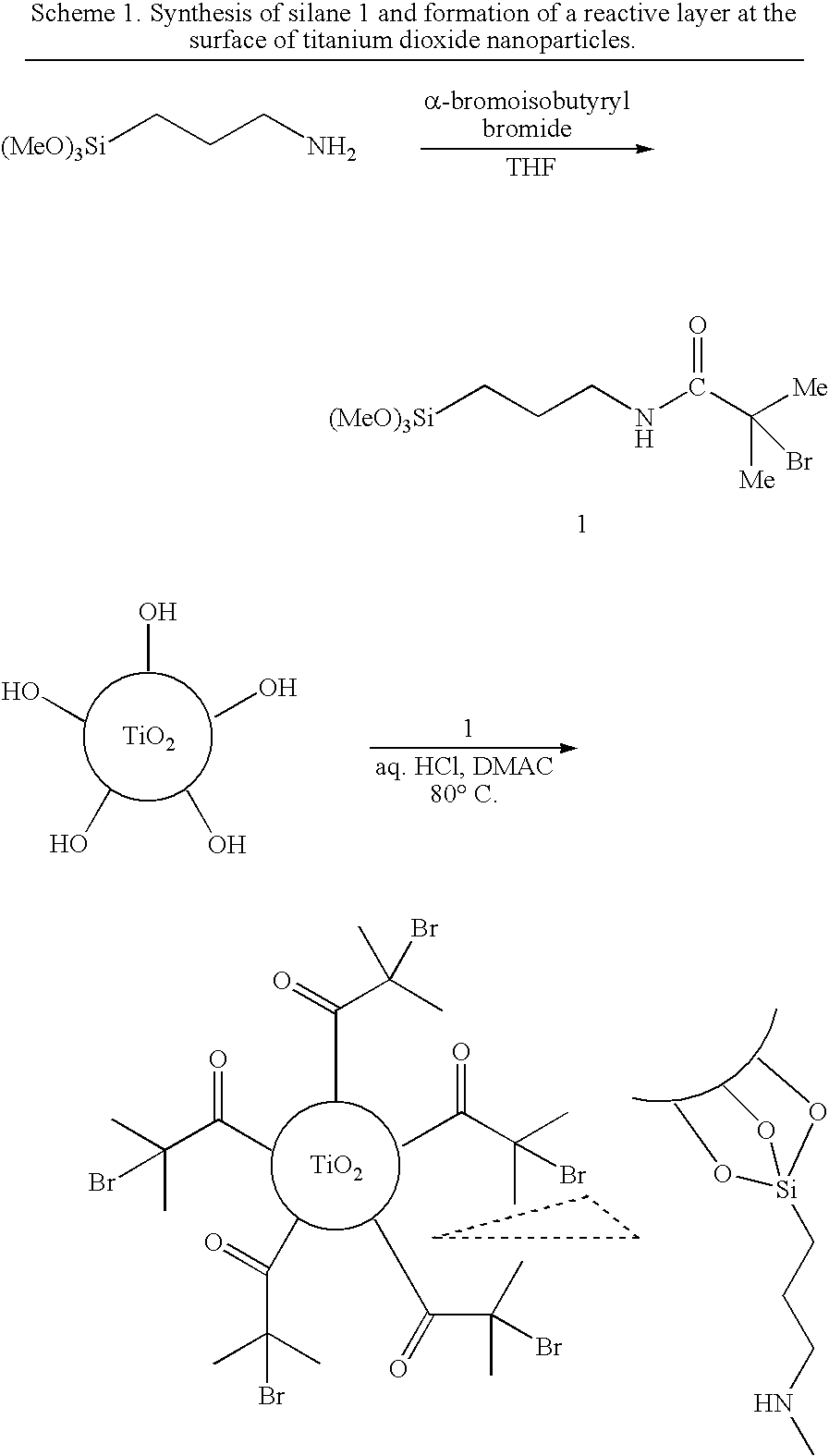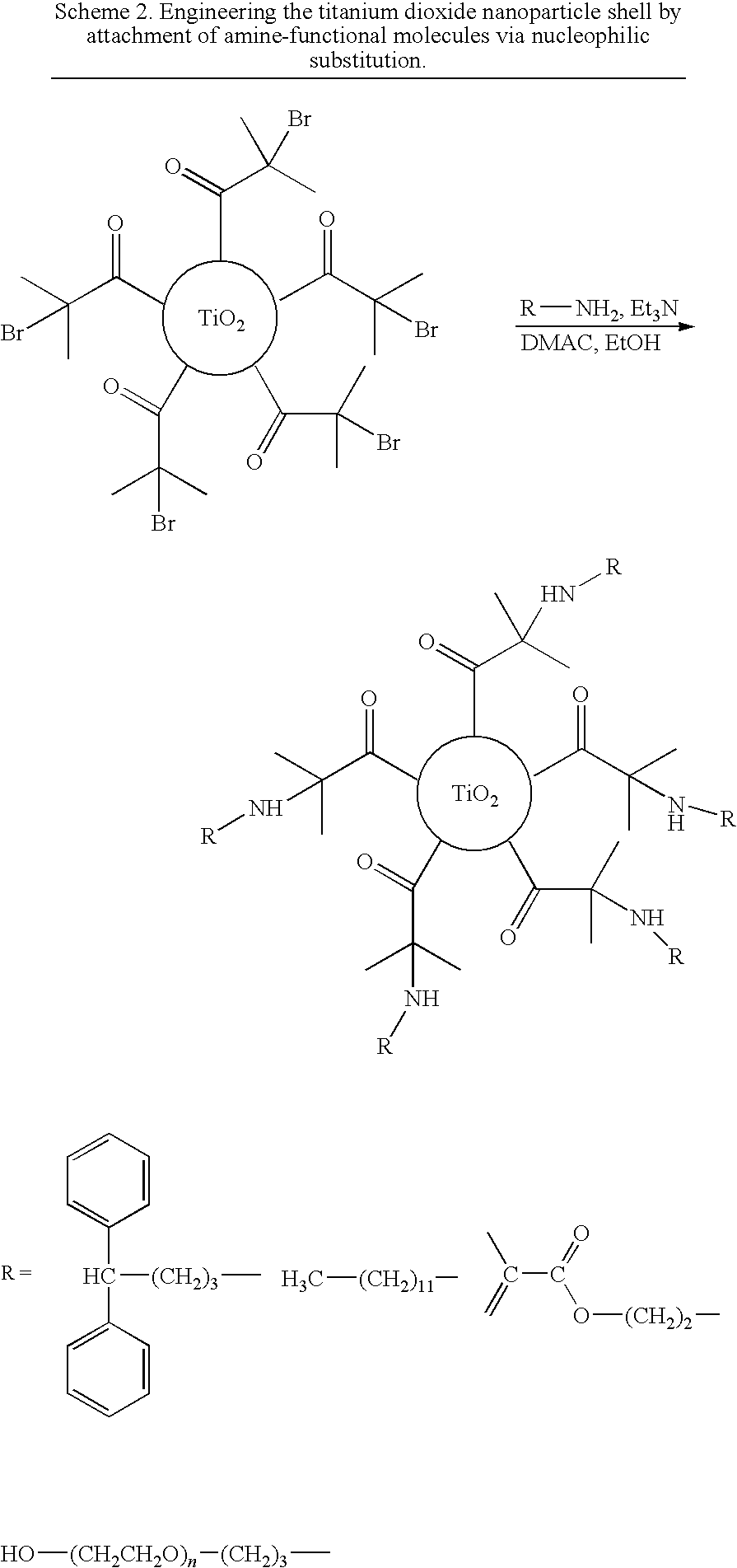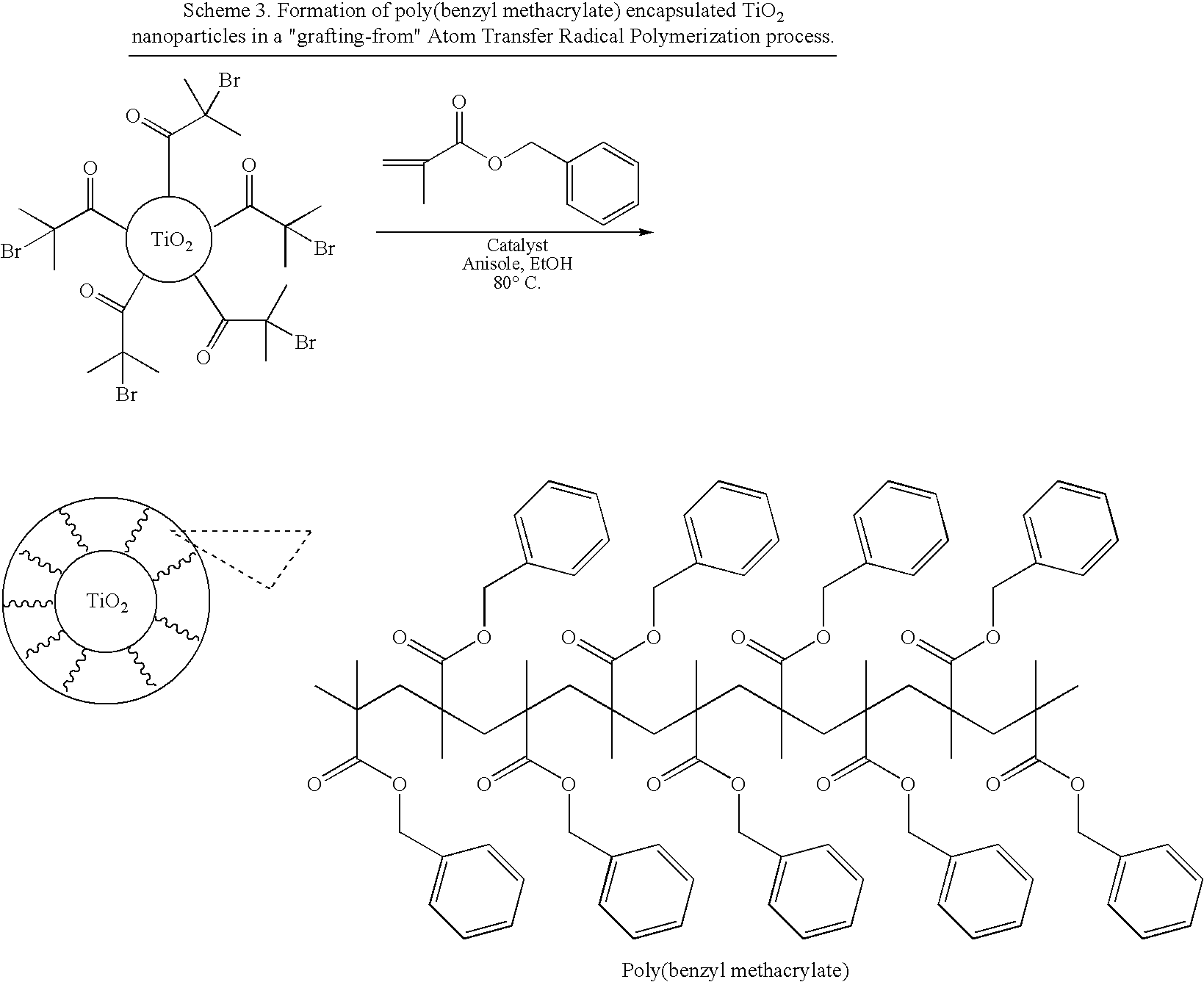Surface modification of metal oxide nanoparticles
a technology surface modification, which is applied in the field of surface modification of metal oxide nanoparticles, can solve the problems of difficult preparation of inorganic nanoparticles, in particular crystalline nanoparticles, and difficult de-agglomeration of such clusters to individual nanoparticles, and achieves only partially successful efforts
- Summary
- Abstract
- Description
- Claims
- Application Information
AI Technical Summary
Benefits of technology
Problems solved by technology
Method used
Image
Examples
example 1
Functionalization of Nanoparticles
[0040]Titanium dioxide nanoparticles were functionalized with a covalently attached, reactive surface layer of 2-bromoisobutyryl-functional moieties in a silanization reaction employing 3-(2-bromoisobutyramido)propyl(trimethoxy)silane (1) (Scheme 1).
Synthesis of 3-(2-Bromoisobutyramido)propyl(trimethoxy)silane (1)
[0041]The synthesis of 3-(2-bromoisobutyramido)propyl(trimethoxy)silane has been described by Stefano Tugulu, Anke Arnold, India Sielaff, Kai Johnsson, Harm-Anton Klok, Biomacromolecules 2005, 6, 1602-1607. These authors employ compound 1 for the functionalization of glass slides and subsequently use the substrate-immobilized 1 as Atom Transfer Radical Polymerization initiator.
[0042]To a solution of (3-aminopropyl)trimethoxysilane in dry tetrahydrofuran (THF) containing 1.2 molar equivalent of triethylamine and cooled to 0° C., 1.2 equivalent of α-bromoisobutyryl bromide was added drop-wise, under an atmosphere of dry nitrogen. After comple...
example 2
[0044]After the treatment of Example 1 the nanoparticles were soluble in common organic solvents, allowing further derivatization. Particles with the reactive 2-bromoisobutyryl-functional surface layer undergo nucleophilic substitution reactions by molecules of choice featuring nucleophilic groups such as primary amines (Scheme 2).
[0045]This allows one to expand the reactive surface layer into a layer of which steric bulk, polarity and chemical functionality can be tuned by the choice of the nucleophilic reagent to be attached. As the nucleophilic substitution with primary amine-functional molecules proceeds with near-quantitative conversion under mild reaction conditions, one can access the wide variety of commercially available amines to tune the composition of the particle's shell and therefore particle compatibility with solvents, polymerizable embedding media or polymers.
[0046]Examples of molecules for attachment to the reactive surface layer are 3,3-di...
example 3
Surface-Initiated Atom Transfer Radical Polymerization
[0051]The silanized titanium dioxide particles as depicted in Scheme 1 were also employed in an Atom Transfer Radical Polymerization (ATRP) process, where the 2-bromoisobutyryl moieties acted as surface-immobilized initiators. Poly(benzyl methacrylate) polymer chains were successfully grown from the TiO2 particles in the presence of a Ruthenium catalyst. The resulting poly(benzyl methacrylate) encapsulated titanium dioxide nanoparticles were soluble in regular organic solvents such as tetrahydrofuran (Scheme 3).
Surface-Initiated Atom Transfer Radical Polymerization
[0052]Titanium dioxide particles, surface-functionalized with 2-bromoisobutyramido groups, with a total weight of 0.40 g, were dissolved in a mixture of N,N-dimethylformamide (0.5 mL), absolute ethanol (2.5 mL) and anhydrous anisole (1.0 mL) in a glass tube fitted with a magnetic stirring bar and a teflon tap that allows connection to a Schlenk line. Benzyl methacrylate...
PUM
| Property | Measurement | Unit |
|---|---|---|
| crystallite size | aaaaa | aaaaa |
| total weight | aaaaa | aaaaa |
| hydrophilic | aaaaa | aaaaa |
Abstract
Description
Claims
Application Information
 Login to View More
Login to View More - R&D
- Intellectual Property
- Life Sciences
- Materials
- Tech Scout
- Unparalleled Data Quality
- Higher Quality Content
- 60% Fewer Hallucinations
Browse by: Latest US Patents, China's latest patents, Technical Efficacy Thesaurus, Application Domain, Technology Topic, Popular Technical Reports.
© 2025 PatSnap. All rights reserved.Legal|Privacy policy|Modern Slavery Act Transparency Statement|Sitemap|About US| Contact US: help@patsnap.com



